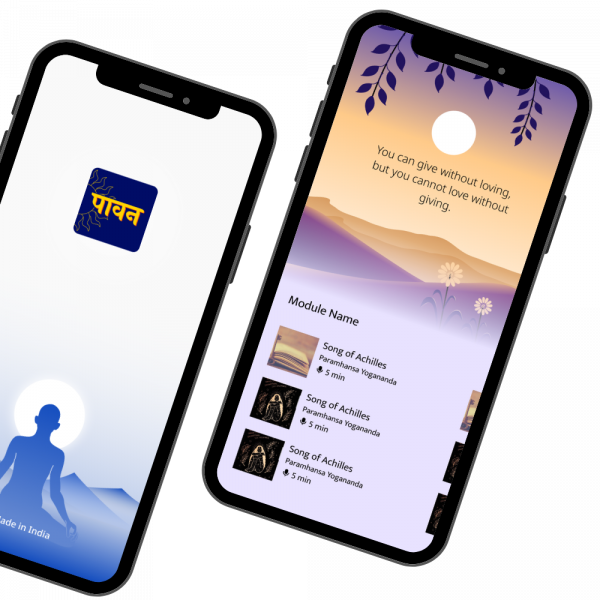What Are Emotional Barriers In Communication?
A mental block, or emotional barrier, inhibits you from expressing your true sentiments and accurately interpreting the behaviors of others around you. Our natural emotional response may be illogical or counterproductive when we encounter emotional roadblocks.
Individuals may be hindered in their ability to communicate due to several factors. You may have sat in on a client meeting when coworkers were rude to one another by talking over one another or interrupting one another. Disruptions to communication can come in many forms, and an emotional barrier is only one.
A person’s unique background and life experience significantly shape how they interpret data. In the case of art, for instance, two viewers of the same work may have vastly different emotional reactions. The same holds for how others view you at work. To one individual, an interaction that comes out as violent may come across as caustic to another and as judgmental to yet a third.
We seldom begin a conversation from scratch; we tend to have preconceived notions and biases about the topic. Every conversation is met with preconceived notions based on prior experiences, beliefs, and learned behaviors. Thus, unconsciously, our brains are set up to quickly and easily assimilate new knowledge by comparing it to what we already know.
The issue is that we don’t always have reasonable expectations. The upshot is that we frequently form opinions about others based only on the information at hand rather than considering their point of view. Communication difficulties arise when one person’s emotions prevent them from effectively listening to another, increasing the likelihood of the conflict worsening.
Low emotional intelligence, often known as emotional awareness or control, is a common cause of communication difficulties. However, learning to identify and express our emotions can improve our ability to connect.
Emotions are strong motivators, making it difficult to overcome emotional boundaries. They can help us find not only our calling but also avoid harm. If we’re afraid of what may happen if we take a certain street corner, we might think twice about going down that alley. Still, if we don’t keep an eye on them, our feelings might get the best of us. Misunderstandings, anger, and broken relationships are just some of the results of emotional obstacles. For this reason, learning to control and regulate your emotions is crucial.
You will also ❤️ these:
Power of Self-Discipline | Natural Ways To Cultivate Discipline
7 Ways to Control Your Mind | Go From Distraction To Deep Work
Emotional Barriers Of Communication In The Workplace
We have established that effective communication is crucial to the functioning of any company. It’s the glue that holds groups together and propels forward-moving projects. It’s also useful for making genuine connections with individuals from many walks of life. Good communication requires more than words; it also uses nonverbal indicators like body language. For example, a shrug at a business meeting might signify several different things. If you want to come off as competent and credible in professional situations, you should work on your communication abilities.
Emotions are a strong driver of behavior. Some, if pursued, might result in extremely favorable and fortunate circumstances, while others could have the opposite effect.
As a rule, the most intensely felt emotions on the negative end of the spectrum serve as obstacles to communication and ultimately lead to spectacular failures.
Let’s quickly use a few instances (emotional barriers examples) to demonstrate this point
1. Fear
It has been argued that pure fear is the most potent of all bad emotions. Embarrassment and insecurity, two typical emotional impediments to communication, are declensions of this noun.
Fear of being criticized or not being good enough might prevent people from communicating successfully on the job. For example, workers may keep quiet during meetings because they are afraid to say anything stupid. This can be a major roadblock in a fantastic idea becoming to fruition.
As it interferes with the brain’s ability to absorb information, anger is a potent foe of clear and concise speech.
2. Anger
Anger makes it harder to think clearly. Because of this, you will be less receptive to feedback and unable to address challenges effectively. Because of this, rage and poor emotion regulation rapidly become a team cohesiveness issue, affecting overall workplace productivity.
In the business world, collaboration across departments is a need. Overcoming emotional barriers is crucial for a company’s success because of the need for successful group communication.
3. Pride
There are several ways in which pride can impede meaningful interaction.
The inability to accept error, stubbornness and a need always to be right are all major roadblocks to getting your point through in a conversation.
Teams can only be effective via collaborative efforts, which are crucial in today’s economic climate. Whenever mental roadblocks, such as pride, teamwork, and cooperation, are doomed to fail.
4. Anxiety
One of the most prevalent emotional barriers, this one always shows up. Commonly, it impairs the area of the brain responsible for articulate speech.
Since an anxious disposition hampers cognition and our capacity to act, anxiety is one of emotional barriers that limits successful communication. This means that anxiety can be a barrier to success in the workplace.
5. Jealousy
Envy and jealousy are serious roadblocks to open dialogue. They can cause someone to offer information that is false or misleading on purpose. This is harmful to a corporation since it consumes time and other resources.
6. Apathy
Apathy, which can be interpreted as a lack of staff involvement, is a serious problem for any business. Time efficiency and the capacity to take on new initiatives, both of which are vital in the current work environment, are diminished.
As a result, modern businesses must improve their communication strategies to encourage employee growth, cooperation, and collaboration. These are not only financially beneficial but also crucial in minimizing employee disengagement and boosting morale in the workplace.
When workers are responsive and open, productivity soars.

How To Overcome Emotional Barriers In Communication?
When practiced in tandem with mindfulness, affirmations of positivity may profoundly affect an individual’s sense of self.
1. Yoga
Practicing daily yoga has been shown to reduce stress resistance and increase human cortisol awakening tendencies. In addition to external health benefits, yoga promotes internal wellness by calming the mind and strengthening the body. Doing so alleviates mental strain and lightens our mood.
2. Breathing exercises
Physical and breathing exercises that make up yoga have been shown to have therapeutic effects. The objective is to find the ideal combination of posture, breathing, and movement that will trigger the physical feelings you need to feel grounded and at peace again. If, for example, a depressed person regularly experiences exhaustion, they might benefit from less aggressive and more thoughtful postures and meditation.
3. Stress-reducing techniques
Pranayama and other stress-reducing exercises, such as child’s pose, corpse pose, leg up the wall position, dolphin pose, puppy posture, spine twist, and standing forward bends, are among the master poses that are essential for increased emotional resilience.
Suppose you want to improve your mental health more comprehensively. In that case, you might also invest more time in practicing meditation (Dhyan and Samadhi) and breathing exercises (Pranayama), like the corpse pose (Shavasana).
When practicing yoga, it’s normal to have negative thoughts. The deliberate use of mindfulness, acceptance, and dispassion may form good thought patterns. This might make it such that you are less impacted by and have fewer negative thoughts.
4. Train the mind
Recognizing the transience of your ideas can be facilitated by training your attention on them as they arise and dissipate in the present moment.
Return your focus to your breathing and your body whenever you find yourself lost in thinking, whether happy or negative. You may train yourself to emotionally distance yourself from either happy or sad emotions over time.
One of life’s biggest challenges is overcoming emotional obstacles. While this may seem daunting, the payoff is substantial if you put in the effort. In addition to facilitating more fulfilling connections with others, this sets the stage for a more confident and well-rounded sense of identity in all facets of your existence.
Emotional barriers are among the most typical obstacles in the workplace regarding the dynamics of a group’s ability to communicate with one another.
Given the significant influence that employees’ emotional barriers have on productivity, modern businesses should realize the need to implement programs to assist their staff in overcoming these obstacles. Workshops and training courses geared at individual improvement are one good example.
Emotional barriers can be difficult to overcome, but with the right strategies and support, it is possible to work through them and learn to express and healthily cope with your emotions.
Download the Paavan App for more such lifestyle related solutions.
Frequently Asked Questions
Question 1. What are emotional barriers to learning?
Emotional barriers to learning refer to negative emotions or psychological factors that hinder a person’s ability to acquire new knowledge or skills. Examples include anxiety, fear, low self-esteem, and lack of motivation or interest.
Question 2. How do you deal with emotional barriers?
Emotional barriers can be challenging to deal with. Still, there are a few strategies you can try to help overcome them: Identify the root cause of the emotional barrier, seek support from others, practice self-care, reframe your thoughts, use visualization and positive affirmations, seek professional help.
Question 3. What are some emotional barriers examples?
Some common emotional barriers examples include: Fear of failure or rejection, anger or resentment, shame or guilt, fear of vulnerability, low self-esteem, & grief or sadness.






